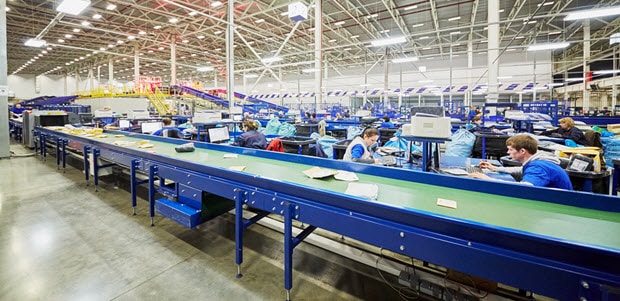A conveyor belt is an important com component in any workplace. It makes work easy—especially when it comes to handling and moving materials around. However, they can cause different types of injuries in any warehouse facility. That’s why you need to familiarize yourself with basic safety practices. This article is going to sample the top safety tips for conveyors.
No Sitting, Standing or Walking On the Belt
Avoid sitting or walking on conveyors. Remember, they have numerous features, including pinch points that might catch your clothes causing serious injuries. If your limb gets stuck in a pinch point, it can get severely hurt or even torn off. Conveyor systems aren’t designed for humans, so avoid riding on them.
Ensure that the controls are Working
When the controls of your conveyor system aren’t working properly, they might end up causing serious problems. Take time to inspect them regularly to ensure that no employee has disconnected or misused them.
Plus, your conveyor’s controls should be easy to read and operate. Place emergency stops in visible and accessible areas.
No Loose Hair, Cloths, and Even Jewelry
Loose clothes and long hair can get trapped by conveyors, hence leading to severe injuries. Long hair should always be tied back or tucked inside a cap. Besides, you should avoid wearing bracelets, rings, bagging clothing, or watches.
All Guards Should Be In the Right Place
Don’t operate a conveyor system whose guards aren’t securely mounted. Typically, conveyors are outfitted with gears, belts, as well as chains that can be hazardous when mishandled.
Employees shouldn’t bypass or alter conveyor guards. Plus, the guard openings must be small enough to prevent workers from entering danger zones.
Be Careful With Pinch Points
Manufacturing conveyor belts are generally filled with pinch points. They’re outfitted with gears, belts, conveyors, as well as other moving parts which can be hazardous if not handled carefully. Employees shouldn’t be able to interfere with conveyor guards.
Use Lock-Out and Tag-Out Guidelines
Failure to lock-out procedures can expose your employees to life-threatening injuries. Before carrying out any maintenance procedures or repairs, be sure to secure the conveyor systems. Tagging-out such procedures prevent equipment and machinery from being powered up whilst maintenance, as well as repairs, are being done.
You also want to make sure that conveyor operators are well-trained to perform tag-out and lock-out procedures.
Authorized Personnel
This will ensure technician safety as well as optimal conveyor performance. Remember, material handling equipment can pose serious risks to those who don’t know how to safely operate it. When certain issues need to be fixed, contact an experienced maintenance person.
Don’t allow unauthorized personnel to handle the conveyor. Only those who’ve undergone rigorous training should operate and carry out maintenance on conveyors.
The Bottom-Line
Of course, owning a conveyor belt can make handling of materials in a warehouse easy. However, it can lead to injuries—especially if you dint practice the best safety practices. The above are common conveyor safety tips you should practice to avoid injuries in warehouses.
